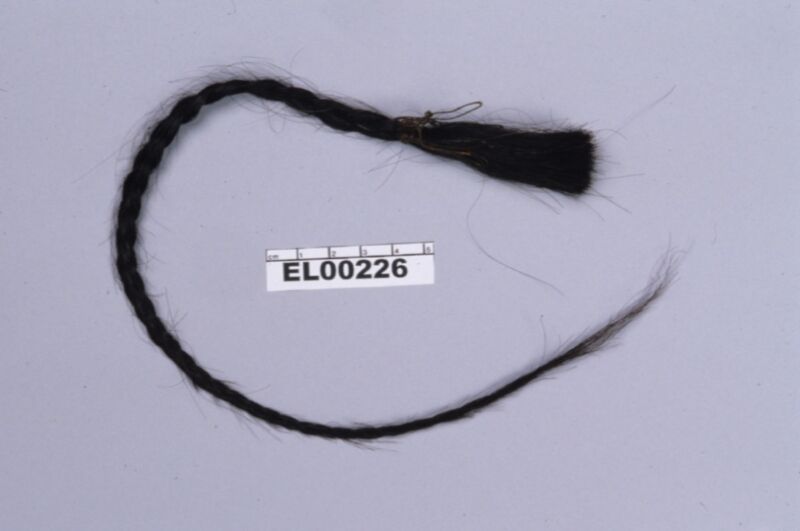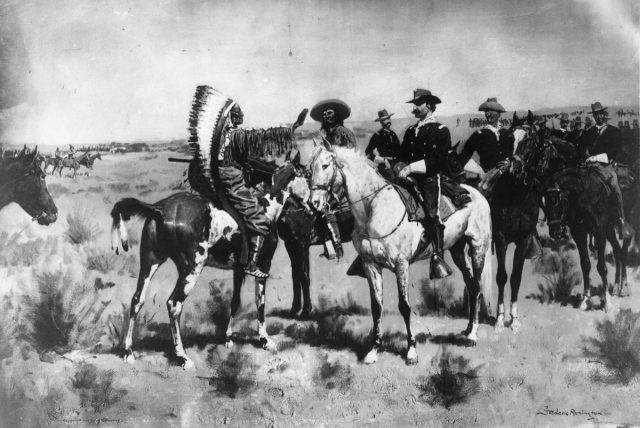

Ancient DNA from Sitting Bull’s scalp lock confirms living great-grandson
source link: https://arstechnica.com/science/2021/10/ancient-dna-from-sitting-bulls-scalp-lock-confirms-living-great-grandson/
Go to the source link to view the article. You can view the picture content, updated content and better typesetting reading experience. If the link is broken, please click the button below to view the snapshot at that time.
Family matters —
Ancient DNA from Sitting Bull’s scalp lock confirms living great-grandson
Ernie LaPointe petitioned US gov't for permission to relocate his ancestor's remains.
Jennifer Ouellette - 10/27/2021, 6:00 PM

An international team of scientists has confirmed the lineage of a living descendent of the famous Lakota Chief Sitting Bull via a new method of DNA analysis designed to track familial lineage using ancient DNA fragments. According to the authors of a new paper published in the journal Science Advances, this is the first time that such an analysis has been used to confirm a link between deceased and living people—in this case, Sitting Bull and his great-grandson, Ernie LaPointe.
The team's method should be broadly applicable to any historical question involving even the limited genetic data gleaned from ancient DNA. “In principle, you could investigate whoever you want—from outlaws like Jesse James to the Russian tsar’s family, the Romanovs," said co-author Eske Willerslev of the University of Cambridge. "If there is access to old DNA, typically extracted from bones, hair or teeth, they can be examined in the same way."
Sitting Bull (Tȟatȟáŋka Íyotake) was a Lakota leader who is best known for his defeat of Lt. Col. George Armstrong Custer's 7th Cavalry at the Battle of the Little Big Horn (aka, the Battle of the Greasy Grass) on June 25-26, 1876. Various tribes had been joining Sitting Bull's camp over the preceding months, drawn by his spiritual leadership and seeking safety in numbers against US troops. Their number soon grew to more than 10,000. Custer's men were badly outnumbered when they attacked the camp and were forced to retreat. The Sioux warriors ultimately killed Custer and most of his men in what was later dubbed Custer's Last Stand.

That victory proved to be short-lived. The US dispatched thousands more soldiers to the region, and over the next year, many tribes chose to surrender. Sitting Bull was not among them, preferring to lead his tribe to Canada's Northwest Territories instead (what is now Saskatchewan).
AdvertisementHe stayed there for four years, despite offers of a pardon, until it became clear that his people couldn't survive, because the buffalo herds were too small to support their food needs. Sitting Bull and his people returned to the US and surrendered on July 19, 1881, to Major David H. Brotherton at Fort Buford. (The chief purportedly told Brotherton, "I wish it to be remembered that I was the last man of my tribe to surrender my rifle.")
The group (some 186 people in all) was kept at Fort Yates, adjacent to the Standing Rock Agency, apart from a 20-month stint at Fort Randall. Sitting Bull gained a certain amount of celebrity in 1884 when he was allowed to tour the US and Canada with a show called the Sitting Bull Connection. He met Annie Oakley on that tour, in Minnesota, and was so impressed with her firearms skills that he symbolically "adopted" her as his daughter and dubbed her "Little Sure Shot." Oakley used the moniker for most of her career. In 1885, Sitting Bull toured with Buffalo Bill Cody's Wild West show for four months, where his "performance" consisted of riding once around the arena each night as the audience gawked.
Meanwhile, tensions continued to increase between Sitting Bull and US Indian Agent James McLaughlin as the US government divided up and sold parts of the Great Sioux Reservation. By 1889, a religious "Ghost Dance" movement—which involved dancing and chanting for the resurrection of deceased relatives and the return of the buffalo herds—was gaining strength, alarming nearby white settlers. Sitting Bull wasn't a participant, but he did allow the dancers on his camping grounds, so McLaughlin ordered the chief's arrest.
Page:
Recommend
About Joyk
Aggregate valuable and interesting links.
Joyk means Joy of geeK